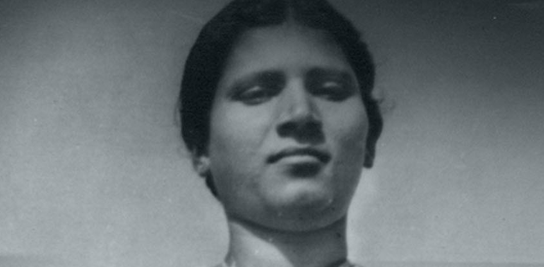Arutla Kamala Devi was a prominent figure and activist of the Telangana Armed Rebellion. She along with her partner Arutla Ramachandra Reddy were pioneers and led the movement based in the Aleru region of Nalgonda.
Introduction
The Razakars of Qasim Razvi, a private dreaded militia established to support the rule of Nizam Osman Ali Khan, the Asaf Ja VII, perpetrated mass violence and lynchings in Hyderabad. It was a time when the Indian Union had entered into independence and Hyderabad was under the control of a hereditary prince.
The Razakar army was primarily constituted to resist the integration of Hyderabad into the dominion of India. The reign of terror led by Razakars was widespread and horrendous. The Razakars, as is well documented, triggered a wave of murderous attacks on people from vulnerable castes, progressive Muslims, Hindus, Communists and engaged the Indian security forces in what is called the Police Action of 1948.
Further, the feudal lords (dominant caste Hindus) were part and parcel of this regime, who owned rural areas called Samsthanams. The Samsthanams were essentially pieces of feudal territories. The feuds led to perpetual bonded labour (vetti chakiri) of people from vulnerable caste communities.
The brutal suppression of masses often results in resistance or movements. Similarly, the Razakars of Telangana, along with the feudal lords (doralu), had to face the wrath of the Telangana Armed Revolt, famously known as the ‘Peasant Rebellion’ led by small peasants and those in rural labour, with support from the Communist Party of India.
Life and activism
Arutla Kamala Devi was born in 1920 to Palla Laxmi Narsamma and Venkat Ram Reddy. Kamala Devi was named Rukmini by her parents. Due to the existing social norms and constructs, she wasn’t allowed to pursue an education.
She got married at the early age of eleven to her cousin Arutla Ramachandra Reddy. Ramachandra Reddy encouraged Kamala Devi to pursue higher education. Kamala Devi then took on the name inspired by Kamala Devi Chatopadhyaya, a Communist who had a significant influence on Ramachandra Reddy’s life.

Kamala Devi and Ramachandra Reddy. Image Credit: Nuwwanet
After completion of her H.S.C education, she worked as a teacher in the secret school for women that was started by her husband in Kolanu Paka. There was a continuous surveillance system in Kolanu Paka which was under the reign of a local feudal lord.
Also Read: Remembering Chakali Ilamma – A Revolutionary Bahujan Woman | #IndianWomenInHistory
The construction of schools and libraries were prohibited in the Hyderabad state. When the feudal lord of the village learnt about the activities of the school, he called for a shutdown. The Jain Society of the area then provided a piece of land for the schooling sessions to continue.
Arutla Kamala Devi was conscious of and stood against the dictatorial regime that was prevalent in Hyderabad. The darkest hours of Telangana history allowed Kamala Devi to become a member of the Andhra Mahasabha, an affiliate of the Communist Party. She was trained in militant struggles during 1943 in Vijayawada. She fought for the rights of women in the Hyderabad state.
Due to the Marshal Law that was imposed in 1944, the militants of the Telangana Armed Rebellion had to go underground. During the period she was underground, she was an active militant leader in the forest lands of Challuru. For a short period, she fell ill and had to move to her maternal residence.

Nizam Osman Ali Khan. Image Credit: India TV
Police personnel working for the Nizam, who were looking for the rebels, found the couple and arrested them. Ramachandra Reddy was shifted to Khammam prison whereas Arutla Kamala Devi was sent to Warangal, then to Aurangabad Prison and from there to Secunderabad Jail. She was imprisoned in 1948, a few months before the merger of the Hyderabad state into the Indian Union and was released only after 1951.
Life as a politician
Arutla Kamala Devi got elected as a member of the Legislative Assembly of Hyderabad state in 1952. She continued as a member of the Legislative Assembly in newly formed Andhra Pradesh, based on the recommendation of the State Reorganization Commission.
She was a member till 1967. In the year 1962, when the Communist Party of India became the main opposition party in the state, Puchhala Palli Sundarayya became the leader of the opposition and Arutla Kamala Devi was made a vice-leader. After the split in the Communist Party in 1964, she was elected as the leader of the opposition and consequently the first woman opposition leader in India.
She travelled to Bulgaria, Austria, USSR and so on. She had called for political retirement after attaining a certain age limit. She herself had opted for voluntary retirement in her sixties. She was a notable activist and the leader of the masses.
Throughout her life, she remained true to the spirit of resistance and ideology. She was awarded an honorary doctorate degree by Kakatiya University for her contributions. The world of the proletariat witnessed the demise of a great revolutionary and leader Arutla Kamala Devi on 1st of January 2001, who always dreamed of a just and equal society.
References:
V6 News
The Hindu
Wikipedia
Also Read: Belli Lalitha: The Nightingale Of The Telangana Resistance | #IndianWomenInHistory
Featured Image Credit: Arutla
About the author(s)
Manohar Boda is a Research Scholar based at JNU - New Delhi.




